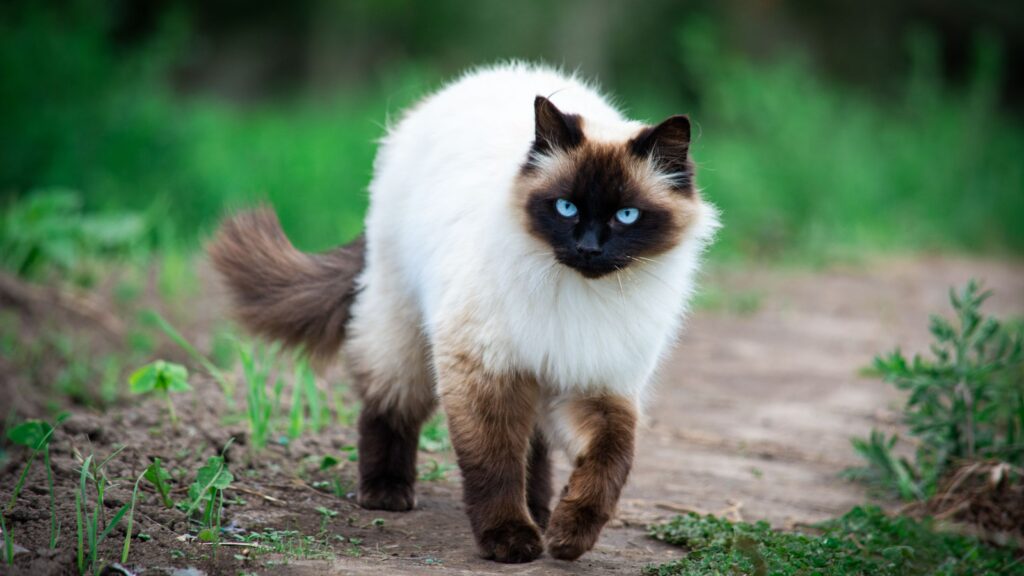
Himalayan cats are known for their striking appearance, with their long, luxurious coats and stunning blue eyes. These beautiful felines are a crossbreed between Persian and Siamese cats, resulting in a unique combination of characteristics that cat owners find irresistible. Understanding the specific care needs of Himalayan cats is essential for providing them with a happy and healthy life.
History and Characteristics of Himalayan Cat
The Himalayan cat breed originated in the 1950s as a result of crossing Persians with Siamese cats to achieve the desired colorpoint pattern. Known for their calm and affectionate nature, Himalayans are popular choices for cat lovers seeking a companion that thrives on human interaction. Their fluffy coats require regular grooming to prevent matting and tangles, making them high-maintenance pets in terms of grooming care. Learning about the history and unique characteristics of Himalayan cats is the first step in providing them with proper care and ensuring their well-being.
Setting Up a Safe and Comfortable Environment
Creating a cat-friendly home for your Himalayan cat is essential to ensure their well-being and happiness. From providing scratching posts to cozy resting spots, a few simple adjustments can make a big difference in your cat’s quality of life.
Creating a Cat-Friendly Home
Make sure to set up scratching posts, interactive toys, and comfortable perches around your home to keep your Himalayan cat engaged and entertained. Consider vertical space for climbing and lounging to cater to their love for heights.
Providing Proper Bedding and Rest Areas
Himalayan cats love to relax and nap in soft, cozy spots. Provide your feline friend with plush bedding or blankets in quiet, safe areas of your home where they can unwind and recharge. A dedicated cat bed or a sunny window sill can become their favorite spot.
Grooming and Coat Care Tips
Maintaining your Himalayan cat’s long, luxurious coat is a crucial part of their care routine. Regular grooming sessions and attention to their eyes and ears can help keep them healthy and looking their best.
Brushing and Detangling the Long Coat
Daily brushing is necessary to prevent mats and tangles in your Himalayan cat’s coat. Use a stainless steel comb or a slicker brush to gently remove knots and debris, paying extra attention to areas like the armpits and belly where mats can form.
Cleaning and Maintaining Eye and Ear Health
Himalayan cats are prone to eye tearing due to their flat faces, so wiping their eyes with a damp cloth daily can prevent staining and infection. Additionally, check their ears regularly for any signs of dirt or wax buildup and clean them with a vet-approved ear cleaner as needed.
Nutritional Needs and Feeding Guidelines
Choosing the right diet and feeding schedule for your Himalayan cat is crucial for their overall health and well-being. Providing a balanced diet tailored to their specific needs will ensure they thrive and stay active.
Choosing the Right Diet for Himalayan Cat
Opt for high-quality cat food that is formulated for long-haired breeds like Himalayan cats. Look for options that contain real meat as the primary ingredient and avoid fillers like corn and soy. For personalized dietary recommendations, it is best to consult with your veterinarian.
Feeding Schedule and Portion Control
Establish a consistent feeding schedule for your Himalayan cat to maintain their weight and energy levels. Divide their daily food intake into several small meals throughout the day to prevent overeating. Monitor their portion sizes based on their age, weight, and activity level to keep them healthy and satisfied.
Health and Wellness Considerations for Himalayan Cat
Vaccinations and Preventative Care
To keep your Himalayan cat in prime health, regular vaccinations and preventative care are essential. Consult your vet to ensure your feline friend stays protected against common diseases.
Symptoms to Watch for in Himalayan Cats
Stay vigilant for signs of potential health issues in your Himalayan cat. Keep an eye out for symptoms like excessive grooming, changes in appetite, or unusual behavior, and seek veterinary advice promptly.
Exercise and Play for Himalayan Cats
Encouraging Physical Activity and Mental Stimulation
Himalayan cats require both physical and mental stimulation to stay happy and healthy. Encourage playtime with interactive toys and engage in activities that keep them agile and entertained.
Selecting Toys and Games for Engagement
From feather wands to puzzle feeders, choose toys and games that cater to your Himalayan cat’s playful nature. Rotate their toys regularly to keep their interest piqued and prevent boredom.
Behavioral Training and Socialization
Positive Reinforcement Techniques
When it comes to training your Himalayan cat, opt for positive reinforcement methods. Reward good behavior with treats or affection to encourage desired habits and deter unwanted actions.
Introducing Himalayan Cats to New People and Pets
Slow and steady wins the race when introducing your Himalayan cat to new faces or furry friends. Allow them to acclimate at their own pace, providing a safe and comfortable environment for positive interactions.
Common Health Issues and Preventative Care
Recognizing and Addressing Common Health Concerns
Familiarize yourself with common health issues that affect Himalayan cats, such as dental problems or respiratory issues. Early detection and prompt treatment are key to keeping your feline companion in top shape.
Maintaining Regular Veterinary Check-ups
Regular visits to the vet are crucial for monitoring your Himalayan cat’s health and detecting any potential issues early on. Schedule routine check-ups to ensure your furry friend receives the best preventative care possible.
In conclusion, Himalayan cats are a captivating cat breed that requires dedicated care and attention to thrive. By providing a safe and comfortable environment, regular grooming, proper nutrition, and adequate exercise, you can ensure that your Himalayan cat lives a fulfilling and happy life. Understanding their unique needs and investing time and effort into their care will strengthen the bond between you and your beloved feline companion. Embracing the beauty and charm of Himalayan cats enriches both their lives and yours, creating a rewarding and loving relationship that lasts a lifetime.
Frequently Asked Questions
1. How often should I groom my Himalayan cat?
Regular grooming is essential for a Himalayan cat’s well-being, ideally requiring daily brushing to prevent matting and tangles in their long coat. It is also recommended to clean their eyes and ears regularly to maintain their health.
2. What type of diet is suitable for Himalayan cats?
Himalayan cats have specific nutritional needs, requiring a diet rich in quality proteins and essential nutrients to support their overall health. Consult with your veterinarian to determine the best diet for your Himalayan cat based on factors such as age, weight, and any existing health conditions.
3. Are Himalayan cats prone to any specific health issues?
Himalayan cats may be predisposed to certain health conditions, such as dental problems, respiratory issues, and kidney disease. Regular veterinary check-ups and proactive health monitoring can help detect and address any potential concerns early on to ensure your cat’s well-being.
4. How can I help my Himalayan cat stay mentally stimulated?
Engaging your Himalayan cat in interactive play sessions, providing a variety of toys, and creating a stimulating environment can help keep them mentally sharp and entertained. Consider introducing puzzle feeders, climbing structures, and rotating toys to prevent boredom and promote their mental and physical well-being.
